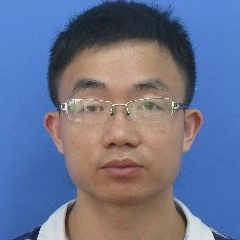Topic Menu
► Topic MenuTopic Editors



2. Faculty of Engineering, China University of Geoscience, Wuhan 430074, China
Mathematical Modeling and Numerical Simulation in Rock Mechanics and Mining Engineering
Topic Information
Dear Colleagues,
In recent decades, the design and construction of geotechnical engineering such as mines, tunnels, hydropower stations, and nuclear waste repositories have been surging in scale, and this trend is expected to continue in the future. These large-scale engineering projects are closely related to rock mechanics and mining engineering. As rock engineering goes increasingly deeper for exploitations, the rock masses are susceptible to the effects of high temperatures and high in situ stresses. The complex engineering environment often leads to the instability of engineering rock mass. Hence, it is necessary to use various means to study the behavior of rock mass under THM coupling and optimize the design for safe and efficient mining practices. Mathematical modeling and numerical simulation have become indispensable tools in this field, enabling engineers and scientists to better understand and predict the behavior of rock masses and design effective mining strategies.
This Topic on "Mathematical Modeling and Numerical Simulation in Rock Mechanics and Mining Engineering" aims to provide a platform for researchers to present their latest advances in this rapidly evolving field. The issue will cover a wide range of topics, including but not limited to constitutive modeling of rock materials, numerical methods for rock mechanics (FEM, XFEM, SPH, DDA, DEM, FDEM and NMM, etc.), rock fracture mechanics, numerical simulation of mining processes, geotechnical monitoring and control, and optimization of mining practices. This issue can serve as the missing link between numerical models and engineering practices. Therefore, "Mathematical Modeling and Numerical Simulation in Rock Mechanics and Mining Engineering” is dedicated to and welcomes all relevant scientific research in order to deepen the understanding of mathematical modeling and numerical simulation in rock masses. Authors are invited to submit their relevant research contributions to this Topic.
Prof. Dr. Fei Tan
Dr. Qiao Wang
Dr. Huachuan Wang
Dr. Defu Tong
Topic Editors
Keywords
- rock mechanics
- mining engineering
- geotechnical engineering
- underground engineering
- mathematical modeling
- analytical solutions
- fracture mechanics
- damage mechanics
- numerical simulation
- machine learning
Participating Journals
| Journal Name | Impact Factor | CiteScore | Launched Year | First Decision (median) | APC |
|---|---|---|---|---|---|

Mathematics
|
2.4 | 3.5 | 2013 | 16.9 Days | CHF 2600 |

Minerals
|
2.5 | 3.9 | 2011 | 18.7 Days | CHF 2400 |

Remote Sensing
|
5.0 | 7.9 | 2009 | 23 Days | CHF 2700 |

Sustainability
|
3.9 | 5.8 | 2009 | 18.8 Days | CHF 2400 |

MDPI Topics is cooperating with Preprints.org and has built a direct connection between MDPI journals and Preprints.org. Authors are encouraged to enjoy the benefits by posting a preprint at Preprints.org prior to publication:
- Immediately share your ideas ahead of publication and establish your research priority;
- Protect your idea from being stolen with this time-stamped preprint article;
- Enhance the exposure and impact of your research;
- Receive feedback from your peers in advance;
- Have it indexed in Web of Science (Preprint Citation Index), Google Scholar, Crossref, SHARE, PrePubMed, Scilit and Europe PMC.


